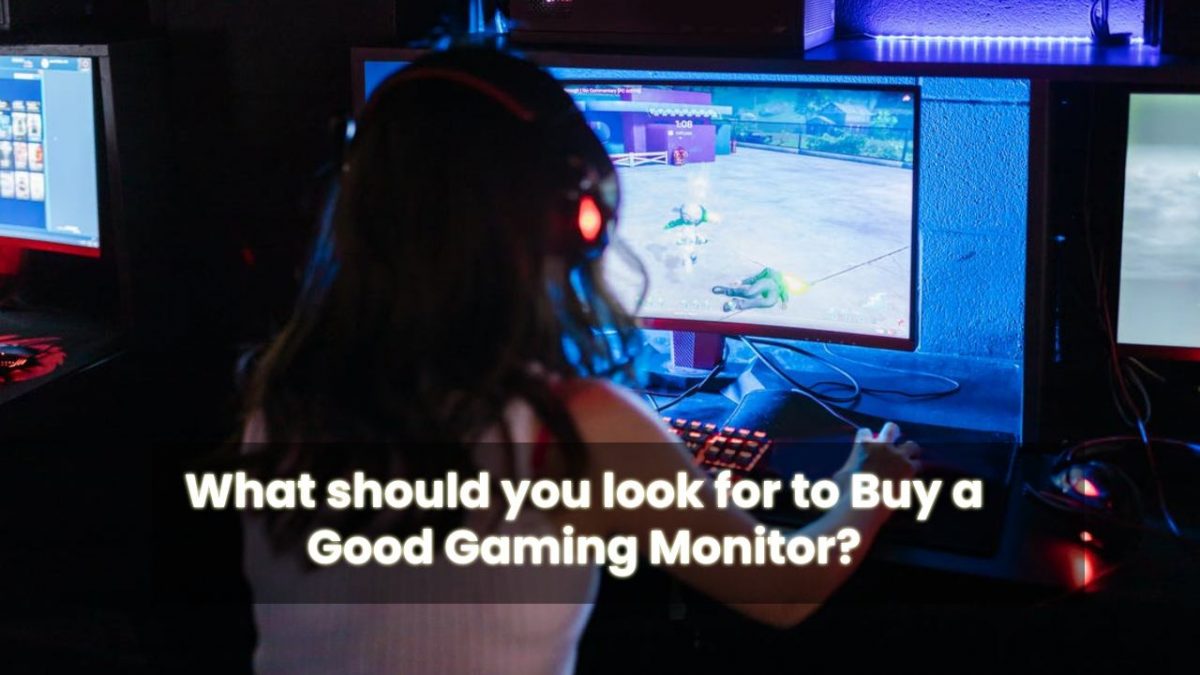The Gaming Monitor is an essential component for a gamer. Without a good monitor, you probably won’t be able to enjoy some of its video games in all their splendour, even if you have a state-of-the-art PC or the best console.
Moreover, if you are an accomplished player, you will know that the outcome of the games can be significantly influenced by the monitor you have. A regular monitor and a gaming monitor are not the same.
A good gaming monitor will also be helpful for other tasks, such as working at home with editing programs or any other demanding job. How to select the best 24-inch monitors to work with and have the best gaming specifications? What’s so special about gaming monitors? What should you look at before choosing? Here are some keys.
Table of Contents
Essential Aspects of a Gaming Monitor
Size
Unlike monitors for other uses, such as television, the size is not increasing substantially in gaming.
24-inch monitors are the perfect format for gaming, always flat, although some prefer larger sizes, in which case 27-inch may be a good option.
Resolution
In terms of resolution, you must take into account the power of your PC. If the graphics card cannot support 4K games, it is advisable to bet on a 1080p screen; if the computer offers enough power, the QHD option can be consider.
Connectivity
The goal is to reflect what happens on the computer or console as immediately as possible on the monitor, without delay or distortion problems due to disconnection. It is significant to look at the number of connectors and the type.
Today’s most common connector is the HDMI, but within the HDMI, there are different versions with different features.
HDMI:
1.0: transmits a Full HD signal at 60 Hz; HDMI 1.3 transmits QHD video at 60HZ and Dolby True HD sound
1.4 transmits UHD video with 4K resolution at 24Hz (intended for movies)
2.0: supports 4K, 60 HZ video resolution and HDR material (it is the most common today)
2.1: allows 8K and 120 Hz video.
The latter is the most advanced technology, which allows you to take full advantage of the capabilities of the latest generation consoles.
Regarding connectivity, there are technologies such as G-SYNC, developed by NVIDIA, or Free Sync, developed by AMD. They seek to synchronize the speed of the monitor with the graphics card.
Refresh Rate
In a gaming monitor, the refresh rate is critical, which is the number of times the image is drawn on the screen in a given time: the higher the refresh rate, the more fluid the game will be, and the sensation of realism will increase.
A high refresh rate also allows for more explicit images and eliminates blurring when there are swift actions.
Therefore, office automation monitors can be around 50 or 60 Hertz, and response of four milliseconds is acceptable. But in gaming, on the other hand, the usual is 144 hertz, and we are looking for a refresh rate of one millisecond so that there is no delay between what happens and what you see.
The Technology Behind a Gaming Monitor
The monitor market is dominated today by two manufacturing technologies: on the one hand, there are OLED screens, which are not the most common in video games.
Curved monitors were all the rage, but gamers have returned to flat ones.
On the other, LCD screens, which we will focus on. Well, among LCD screens, there are three types of panels, whose differences we explain:
TN panels: their response time is the lowest, and they refresh the screen at high speed. The must: The viewing angles are limited, and the quality of colour reproduction is lower. These types of panels are the most specific for gaming.
IPS panels have excellent image quality and offer vast viewing angles, preventing some screen areas from being dark from certain positions. However, they have a drawback to video games: the response time is somewhat higher. These panels may be more convenient if you intend to give the monitor other uses besides gaming.
VA panels: their main characteristic is that they are the best in contrast and brightness. In response time, they are halfway between the TN and the IPS.
Why is response time so important, which we have mentioned among the essential characteristics? in Gaming Monitor
The screen’s response time is the interval that elapses between the order and the display of that order on the net. It is essential because the result of a game can depend on reducing that response time. Above all, in very competitive games with expert players, any detail makes the difference.
Conclusion
Gaming monitors are planned to make the output of your graphics card and CPU look as good as probable while gaming. They’re responsible for showing the final result of all of your computer’s image rendering and processing, yet they can vary widely in their representation of colour, motion, and image sharpness.

